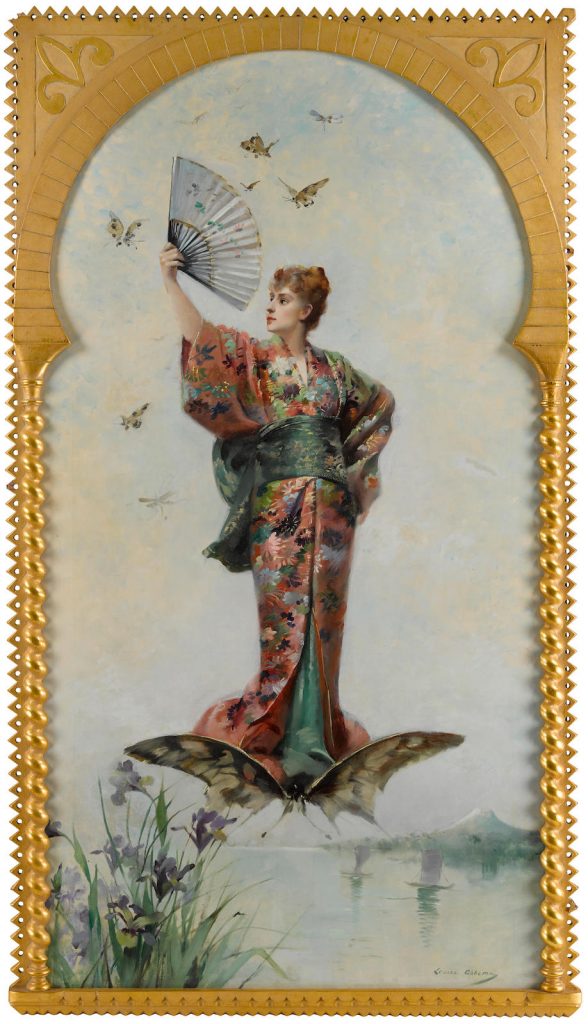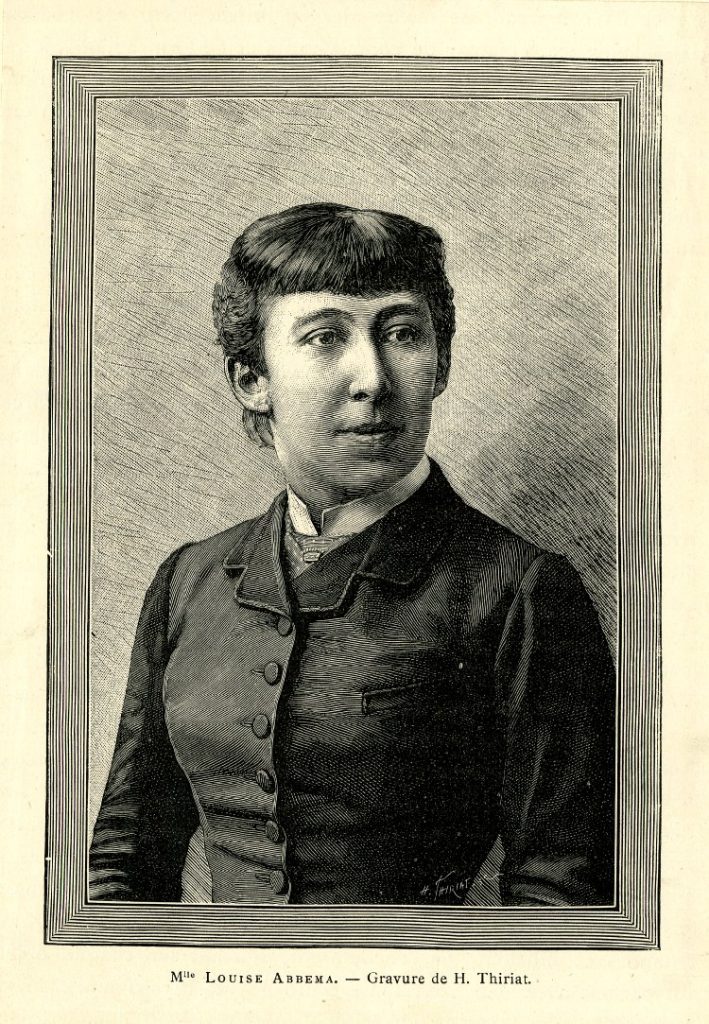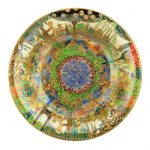Louise Abbéma was born on 30th October 1853 and died on the 10th July 1927. She was a French painter, sculptor, and designer of the Belle Époque and included some fairy paintings including the beautiful butterfly fairy below which has a lovely oriental feel to it.
She first received recognition for her work at age 23 when she painted a portrait of Sarah Bernhardt, her lifelong friend and possibly her lover.
She went on to paint portraits of other contemporary notables, and also painted panels and murals which adorned the Paris Town Hall, the Paris Opera House, numerous theatres including the “Theatre Sarah Bernhardt”, and the “Palace of the Colonial Governor” at Dakar, Senegal. She had an academic and impressionistic style, painting with light and rapid brushstrokes.
Louise Abbéma (French, 1853-1927)
A butterfly fairy signed ‘Louise Abbema’ (lower right)
Oil on canvas
84 1/4 x 45in (213 x 114.5cm)
Sold for US$ 15,000 (£ 11,725) inc. premium at Bonhams in 2018
Portrait of French painter Louise Abbema
This is a portrait of the artist Louise Abbema, half-length, head turned to right, with buttoned jacket Wood-engraving.
Reference: © The Trustees of the British Museum
She was a regular exhibitor at the Paris Salon, where she received an honorable mention for her panels in 1881. Abbéma was also among the female artists whose works were exhibited in the Women’s Building at the 1893 World Columbian Exposition in Chicago. A bust Sarah Bernhardt sculpted of Abbéma was also exhibited at the exposition.
Abbéma specialized in oil portraits and watercolors, and many of her works showed the influence from Chinese and Japanese painters, as well as contemporary masters such as Édouard Manet. She frequently depicted flowers in her works. Among her best-known works are The Seasons, April Morning, Place de la Concorde, Among the Flowers, Winter, and portraits of actress Jeanne Samary, Emperor Dom Pedro II of Brazil, Ferdinand de Lesseps, and Charles Garnier. Reference: Wikipedia





